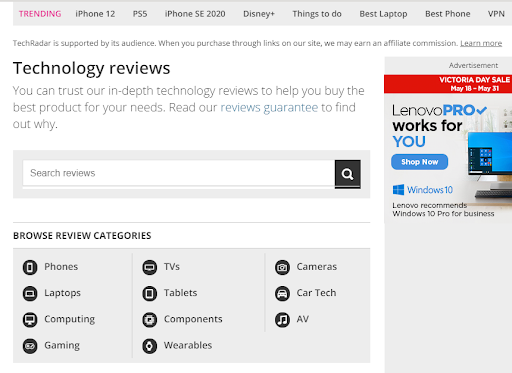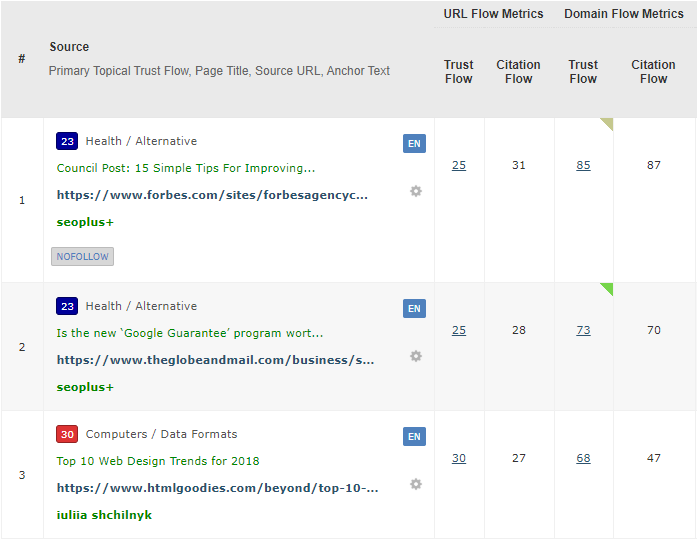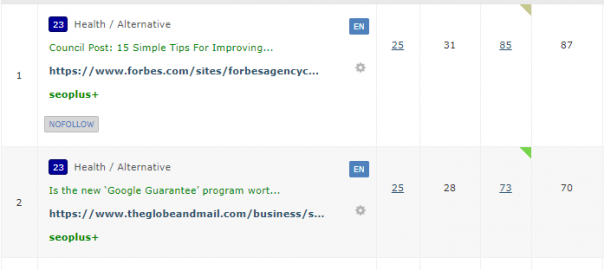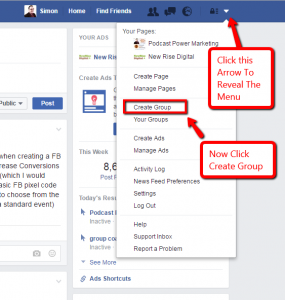Do you have an ecommerce store on a platform such as Shopify or Magento?
Need a boost to stay ahead of your competitors?
The links pointing to your site are one impactful way that Google gauges the quality, relevance, and authority of your site.
So how do you get more of them for your ecommerce business?
Here’s how you can best utilize link building to do just that.
Start by Auditing Your Ecommerce Site’s Inbound Links
Before you begin link building, it’s important to understand how your website currently stands in terms of link volume and link quality.
You may already have earned links organically, even without any previous link building efforts.
These can come from product links, syndicated pieces, previous news coverage, a satisfied customer leaving your website as a resource on a forum page, random directory websites, and more.
Do a link audit to see where you’re starting out. That’s a whole topic unto itself, and you’ll find a great checklist here to get you going.
Next Step: Internal Link Optimization
Having your internal links set up properly helps distribute PageRank and enables customers to move seamlessly from one area of the site to another, discovering new products as they go.
Major news websites are great examples of how to use your internal links properly.
For ecommerce stores, this is where similar product links and collection pages can shine through.
Take a look at your inventory and think about the average user who would stumble upon each product page. Use this as an opportunity to display complementary products that would be of interest to such users.
Where might they be headed next? Think in terms of their customer journey and strategize to get them there as quickly and easily as possible.
Make sure you’re linking from resources like your FAQs page and blog posts to specific product lines or categories.
Now, let’s check out 5 major sources of ecommerce links and the pros and cons of each.
1. Product Reviews
Now, we can start looking at building external links. One of the most effective external link building strategies for an ecommerce store is to be featured on review websites.
There will be several similar websites within each industry, so a quick Google search should do the trick.
It’s a fairly simple process. All you need to do is reach out to the website you think would be a good fit and offer to provide a sample of your product for them to review.
There are a few things to keep in mind with product reviews:
You Want to Target Genuine & Honest Review Websites
If your product is of a lower quality, you shouldn’t expect a good review.
Make sure you only send the best you have to offer.
You May Be Hit With a Response from the Website Requesting a Payment to Review the Product
Be cautious when it comes to paying for product reviews.
Google frowns upon paid links, so this should be avoided.
Instead, save your money for advertising purposes or sponsorships.
Also, always make sure that any paid link has a nofollow or sponsorship attribution. Without such attribution, the link could lead to a manual action and will fail to provide any value.
While PageRank isn’t passed from a nofollow or sponsored link, some SEO value can still be found due to the rise of site traffic from such links.
Keep in mind, too, that if you’re a third-party seller, the product review may link to the manufacturer’s website rather than yours.
Keep this in mind when discussing the review and confirm you’ll be receiving a link before sending the product.
2. Third-Party Sellers
For third-party sellers, this also opens a new opportunity for links.
If you sell a somewhat popular product, there are likely already some reviews out there.
Seek out the articles where your product is mentioned and reach out to the website. See if they’re willing to link to your product page as an option for purchasing the product.
Reviews and articles regarding specific products do sometimes provide multiple links to different websites to purchase a product.
If your website offers a better deal or shipping, you may luck out and get the link.
There is a possibility that the website you’re reaching out to is part of an affiliate program with another website for the product in question, in which case they won’t add a link to your product page.

3. Affiliate Links
Affiliate links are another option for building links from product reviews and similar articles.
Essentially, the influencer who links to your product page receives a commission from each click the link receives. While this can be an effective marketing tactic to boost sales, there isn’t much SEO benefit.
The reason behind this is that the link on the page has a tracking code associated with it, usually coming from a third party.
The link isn’t directly connected with the product page, resulting in a loss of PageRank.
While affiliate links may not be the best tactic if your primary goal is a robust link profile, it still offers many other benefits such as driving traffic and sales. That activity on-site may have other less direct SEO benefits.
4. Media Relations
While this can be tricky for ecommerce sites, there are still ways to gain links using PR and media relations.
Sharing your industry knowledge and providing valuable insight are great ways to get noticed.
For example, if you sell clothing, try offering fashion tips for the upcoming season.
Watch for trends in your industry and opportunities to pitch your point of view or helpful and unique perspective to journalists.
Using tools such as Help A Reporter (HARO) can be a great way to connect with journalists and bloggers to offer your expertise for pieces they’re working on.

You can also reach out directly to writers in your niche.
Create your own pitch, or offer to help update an older article that could benefit from some fresh content.
This method will most likely result in links to your homepage, which is another reason optimizing your internal links is important.
5. Building Links Through Content
Another effective way of generating links to your website is through high-quality content and resources on your site.
For example, writing an in-depth article with plenty of valuable information has the potential to result in organic links if found by other websites that wish to use the article as a source.
You can also send your article directly to the websites that may link to your resource, which could be a blog post, video, infographic, whitepaper, etc.
Request that they link to it in a relevant article they’re working on, update a previously written article, or even use it as a jumping-off point to write a guest blog for them based on the article you sent them.
Ecommerce Link Building is Part of a Comprehensive Digital Marketing Strategy
It’s important to review the quality of your inbound links and the impact they’re having as you continue your efforts to build more.
Majestic is one tool that can be helpful here. It provides great insights including the website’s Trust Flow and Citation Flow (Majestic’s DA metrics) of the domain as well as the specific page.

Julie Joyce has a great comparison of this and other Domain Authority checkers here that can help you evaluate linking opportunities.
It’s also a good idea to review your outreach method used to gain links and evaluate its success. If it wasn’t as fruitful as you would have hoped, take a look at the leads you contacted as well as how you approached them.
Tweak your pitches and get creative; test new link building outreach emails, measure results, and adapt as you go.
If you operate an ecommerce store and haven’t taken advantage of a link building strategy yet, you may be leaving valuable organic traffic on the table.
Digital & Social Articles on Business 2 Community
(21)






